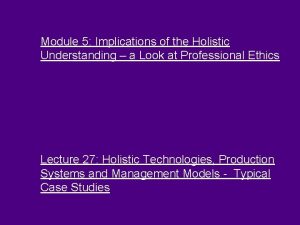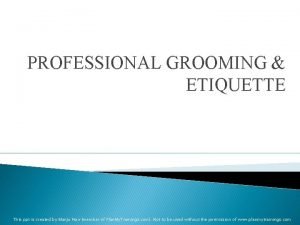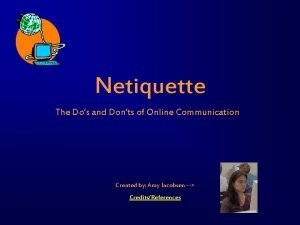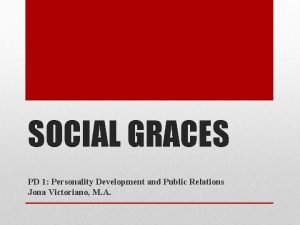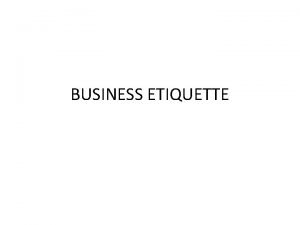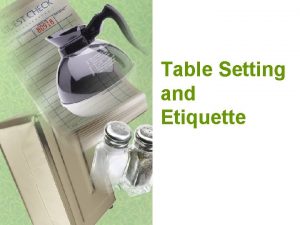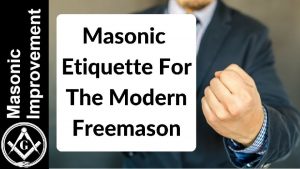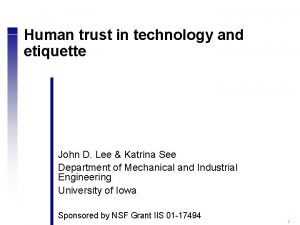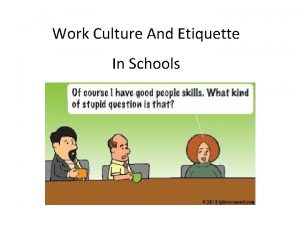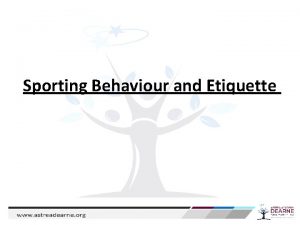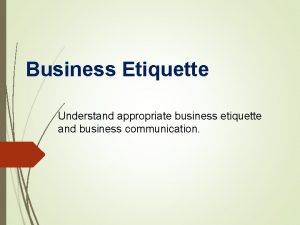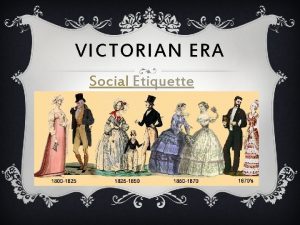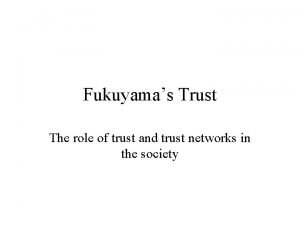Human trust in technology and etiquette John D



















- Slides: 19

Human trust in technology and etiquette John D. Lee & Katrina See Department of Mechanical and Industrial Engineering University of Iowa Sponsored by NSF Grant IIS 01 -17494 1

Beyond theoretical importance The University of Iowa 10/3/20 2

Affect, decision making, and reliance n Damasio (1994): Neurological basis for affect as a key element in effective decision making n Norman (2002): Affect and cognition interact with technology to influence behavior Picard (1997): Affective computing can enhance acceptance and The University of Iowa performance n 10/3/20 3

Strange case of Phineus Gage Left intellectual abilities intact, but greatly impaired decision mak and emotional response The University of Iowa 10/3/20 4

Affect, decision making, and reliance n Kramer (1999) Trust as an important social decision heuristic in organizations n Nass (1996): People respond to technology as they do people n Zuboff (1987): Operators report role of trust on reliance in working with computerized controllers n Lee & Moray (1992): Trust influences reliance on automation Trust: a critical social lubricant that mitigates the cognitive complexity of increasingly unstructured relationships The University of Iowa 10/3/20 5

Trust in technology? n Trust: An attitude that reflects a person’s expectation that technology will achieve his or her goals based on: • Performance of the system (What it has done) • Process that governs operation (How it works) • Purpose of the design (Why is was created) The University of Iowa n Similar to trust between people? 10/3/20 6

Belief Attitude Intention Behavior The University of Iowa 10/3/20 7

Calibration and resolution of trust The University of Iowa 10/3/20 8

Calibration of trust in automation n Consider cognitive complexity and social constraints to support trustable behavior (make algorithm understandable) n Reveal behavior to calibrate trust (make behavior understandable) The University of Iowa 10/3/20 9

An experiment with a supervisory control microworld n Evaluate role of sonification in calibrating trust to enhance supervisory control n Investigate individual differences in trusting tendency “it sounded ‘hollow’ and didn’t feel right so we got out” The University of Iowa 10/3/20 10

Pasteurization plant microworld The University of Iowa 10/3/20 11

Day Two Day One 1 1 2 2 3 3 4 4 5 5 6 6 7 7 The University of Iowa 8 8 Day Three 9 10 11 12 13 14 15 16 17 18 19 20 21 22 23 24 25 26 27 28 29 30 31 32 33 34 35 36 37 38 Auto. Fault Man. Fault No fault (Length indicative of severity of fault) 10/3/20 12

Performance as a function of sound automatic controller fault The University of Iowa 10/3/20 13

Sonification and reliance during automatic controller faults The University of Iowa 10/3/20 14

Sonification and trust during automatic pump controller faults The University of Iowa 10/3/20 15

Increasingly complex automation and human-automation interactions The University of Iowa 10/3/20 16

Conclusions n Trust influences reliance as an attitude in the context of beliefs, attitudes, intentions, and behavior. Reliance is not a good measure of trust n Designers should focus on calibrating trust not enhancing trust n Trust calibration may depend on the design of the algorithm and feedback n Systems that mimic human characteristics, may lead to inappropriate trust as human characteristics lead to false expectations The University of Iowa 10/3/20 17

n Layers of etiquette • Pragmatic (communicate, co • Role identification • Empathetic, affective The University of Iowa 10/3/20 18

Thoughts? Human Etiquette Machine Etiquette System Etiquette Mapping function to define system etiquette Layers of Level of abstraction in etiquette Etiquette Pragmatic Role specification Empathetic/affe ctive translation Literal vs. figurative Functional vs. physical “Please, can I interrupt” The University of Iowa 10/3/20 19
 Northern trust charitable trust
Northern trust charitable trust Plantation human development trust
Plantation human development trust Human needs and human development
Human needs and human development Chapter 8 human needs and human development
Chapter 8 human needs and human development Non human nouns
Non human nouns Case studies of typical holistic technologies
Case studies of typical holistic technologies Higher business management
Higher business management Future of work at the human-technology frontier
Future of work at the human-technology frontier Copyright
Copyright Manners and etiquette vocabulary
Manners and etiquette vocabulary Grooming ppt for employees
Grooming ppt for employees Do's and don'ts of netiquette
Do's and don'ts of netiquette Personality traits
Personality traits Grooming and etiquette meaning
Grooming and etiquette meaning Code of diplomatic etiquette and precedence
Code of diplomatic etiquette and precedence Pulpit etiquette and protocol
Pulpit etiquette and protocol Conclusion of business etiquette
Conclusion of business etiquette What is email etiquette and why is it important
What is email etiquette and why is it important French setting table
French setting table Etiquette and manners
Etiquette and manners





